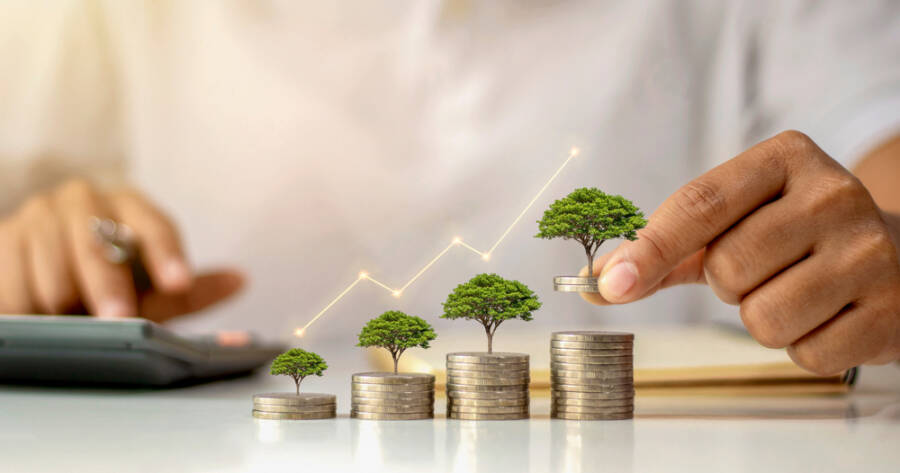Sustainable investing is a strategy that integrates environmental, social, and governance (ESG) considerations into financial decision-making. It aims to generate long-term competitive financial returns while also having a positive societal impact. As global awareness grows around climate change, social justice, and corporate responsibility, sustainable investing is no longer niche—it’s becoming mainstream.
Understanding Sustainable Investing
Sustainable investing, also known as socially responsible investing (SRI), ESG investing, or impact investing, involves choosing investments based on their environmental stewardship, social responsibility, and corporate governance practices. While traditional investing primarily evaluates risk and return, sustainable investing adds a third dimension: impact.
This strategy doesn’t mean sacrificing returns. In fact, many studies have shown that ESG-focused portfolios can perform on par with—or even outperform—conventional portfolios over the long term, thanks to reduced risk exposure and enhanced reputational value.
Core Components of ESG
The three core aspects of ESG are:
Environmental
This includes a company’s efforts to reduce carbon emissions, manage waste, conserve natural resources, and limit environmental harm. Examples include renewable energy usage, sustainable supply chains, and initiatives to combat climate change.
Social
This considers how a company manages relationships with employees, suppliers, customers, and communities. Key issues include labor rights, workplace diversity, human rights, consumer protection, and community engagement.
Governance
This addresses leadership, executive pay, audits, internal controls, and shareholder rights. Strong governance practices ensure transparency, accountability, and ethical corporate behavior.
Approaches to Sustainable Investing
Investors can adopt various approaches depending on their goals and values:
- Negative screening: Excluding companies or sectors that don’t align with ethical or sustainability criteria (e.g., tobacco, fossil fuels, weapons).
- Positive screening: Selecting companies that perform well on ESG metrics or are leaders in sustainability practices.
- Impact investing: Directing capital toward companies or projects with a measurable social or environmental benefit, such as affordable housing or clean energy.
- ESG integration: Systematically incorporating ESG data into financial analysis and investment decisions.
- Thematic investing: Focusing on themes like renewable energy, gender equality, or water conservation.
Benefits of Sustainable Investing
This approach to investing offers several potential advantages:
- Long-term value creation: Companies with strong ESG practices tend to be more resilient and better positioned to manage long-term risks and opportunities.
- Risk management: ESG factors help identify risks not captured by traditional financial analysis, such as regulatory changes, reputational damage, or supply chain disruptions.
- Alignment with personal or institutional values: Investors can support causes they care about without sacrificing returns.
- Market opportunity: The global transition toward a low-carbon, inclusive economy is creating new investment opportunities in green technologies, sustainable agriculture, and beyond.
Challenges and Criticisms
Despite its growth, sustainable investing faces several challenges:
- Lack of standardization: Different ESG ratings and metrics can produce inconsistent evaluations of the same company.
- Greenwashing: Some companies may exaggerate their sustainability efforts to appear more ESG-friendly than they actually are.
- Data limitations: ESG data can be incomplete, unverified, or difficult to compare across firms and industries.
- Performance myths: Some skeptics argue that ESG investing compromises returns, though evidence increasingly suggests otherwise.
The Future of Sustainable Investing
Sustainable investing is poised for continued growth. Regulatory bodies in the EU, U.S., and beyond are pushing for greater ESG disclosures, and investor demand for responsible investment products is at an all-time high. As climate-related risks become more apparent, and younger generations take a larger role in financial markets, sustainable investing is likely to become the norm rather than the exception.
Financial technology and improved ESG analytics are also enabling more transparent and impactful investment strategies. With better tools and growing awareness, investors can more effectively align their portfolios with both financial objectives and societal values.
Consider Your Investing Strategy
Sustainable investing represents a fundamental shift in the way people think about finance—not just as a means of personal gain, but as a tool for driving positive change. It encourages businesses to act responsibly, holds them accountable, and channels capital toward a more equitable and sustainable world.
As it evolves, sustainable investing has the potential to reshape global markets and redefine success—not only in terms of profit, but also in terms of purpose.
